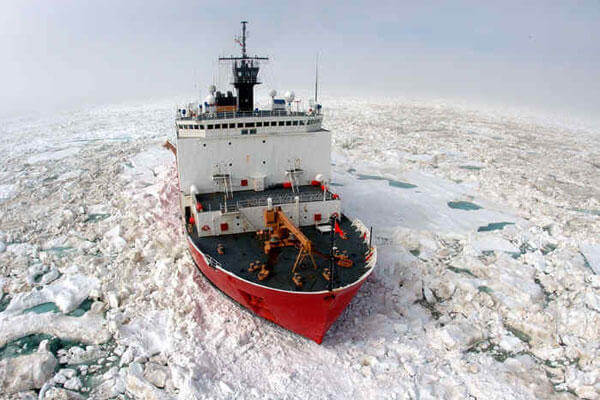The Coast Guard's plan to build a new heavy icebreaker for the Arctic to join the 40-year-old Polar Star could still be in the design phase in 2020 despite an "accelerated acquisition timeline," and that's assuming Congress goes along with the funding.
"We'd like to begin construction activity by 2020," Ahmed Majumder, the deputy program manager for the icebreaker plan, said this week at the Navy League's Sea Air Space exposition at National Harbor, Maryland, outside Washington, D.C.
The program could still be in the design phase but "we might be able to accelerate that" depending on funding from Congress, Majumder said. He said the Coast Guard was asking for $150 million for icebreaker construction and design in the fiscal 2017 budget. The projected cost of the new icebreaker was in the $1 billion range.
The Coast Guard, part of the Department of Homeland Security, currently has one heavy icebreaker, the 399-foot Polar Star which was commissioned in 1976, and the 420-foot medium icebreaker Healy, which was commissioned in 2000.
According to DHS, the nation actually needs two new icebreakers for both the Arctic and Antarctic regions "to ensure continued access to both polar regions and to support the country's economic, commercial, maritime and national security needs."
The Coast Guard currently "is in the Analyze/Select phase of acquiring a new polar icebreaker, which involves evaluating acquisition approaches and assessing the merits of each approach," DHS said.
Homeland and the Coast Guard have repeatedly pointed to Russia's growing involvement in the Arctic to press for two new icebreakers.
The Coast Guard's annual "Major Icebreakers of the World" report lists the U.S. as having five ships with icebreaking capabilities, including the Polar Star, the Healy and the laid-up Polar Sea plus two privately-owned ships with icebreaking capabilities.
Russia was listed as having 41 icebreakers with five more under construction now and six more being planned.
President Barack Obama promised a new icebreaker last September during a visit to Alaska in which he became the first U.S. president to venture above the Arctic Circle.
"The new, heavy icebreaker will assure year-round accessibility to the Arctic region for Coast Guard missions including protection of Alaska's maritime environment and resources," the White House said in a statement at the time.
--Richard Sisk can be reached at Richard.Sisk@Military.com.



























